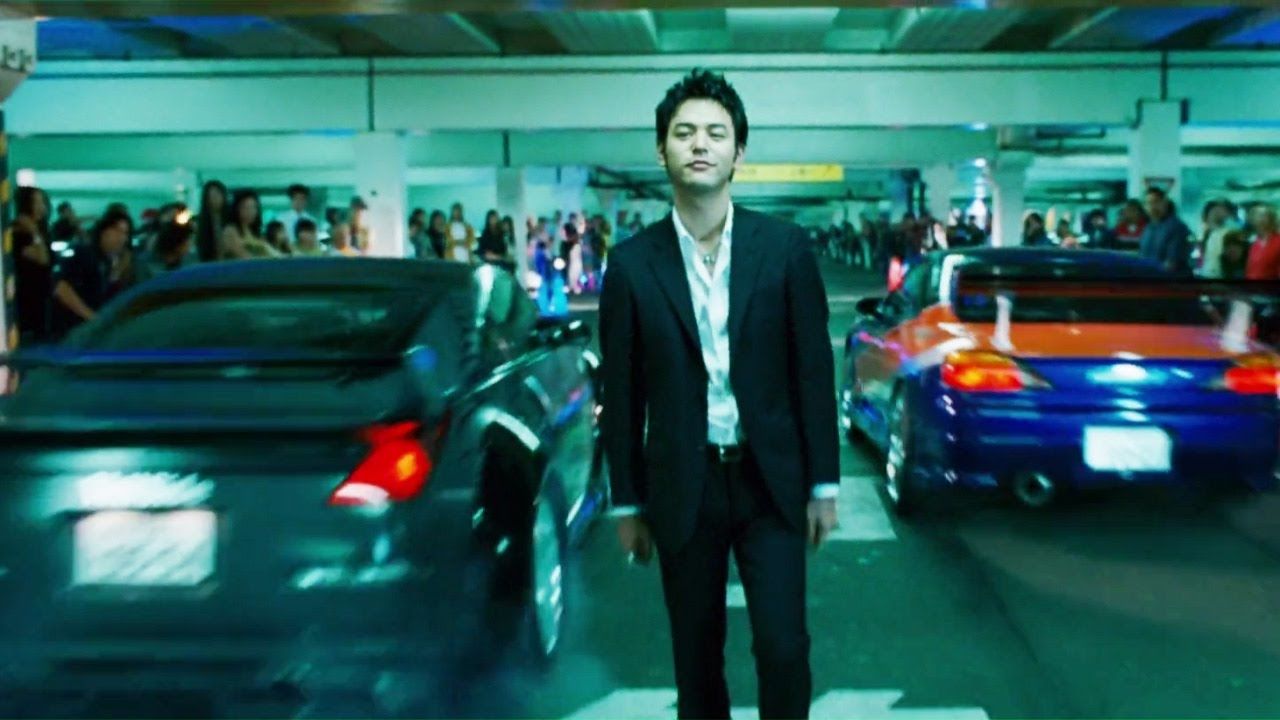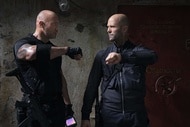Create a free profile to get unlimited access to exclusive videos, sweepstakes, and more!
How the original Fast & Furious: Tokyo Drift pitch changed the franchise forever

When The Fast and the Furious hit theaters in the summer of 2001, no one could have predicted that nearly two decades later it would be an international blockbuster franchise with eight increasingly gigantic, genre-bending installments and an even bigger sci-fi spinoff movie. But screenwriter Chris Morgan, who joined the franchise for its third movie, could probably most credibly claim credit for planning out the unlikely arc, as evidenced by his original pitch to Universal back in the mid-aughts.
His initial pitch became The Fast and the Furious: Tokyo Drift (2006), which came and went out of theaters but has since become perhaps the franchise's biggest cult hit, with a devoted fan base all its own. Morgan has since been a writer on each and every Fast film, proving even more a constant than Vin Diesel and Michelle Rodriguez. He also conceived of and shared screenwriting on the first spinoff, reigning box-office champion Fast & Furious Presents: Hobbs & Shaw, and he spoke to SYFY WIRE late last week about the franchise's unlikely evolution.
The Fast franchise has gone through a number of genre changes over the years — was that something you plotted out or an organic development?
I came on in the third movie, and back then, one of the original ideas was to be able to bring back the crew and to expand the world. And as the movies went along, we were really lucky that the audience embraced them and they loved the characters, and that let us have a little bit of leeway to always design the challenges for the characters so that the personal issues they have to go get over always necessitate some sort of big action or lateral thinking. It's that piece or genre shift to get to it.
The one specifically I'm talking about is Fast Five. There's a core problem in Fast Five that our guys need to get off the grid forever. The only way they can do that is to have a lot of money. There's potentially a baby that's about to be born, that's kind of at stake, so they decide to pull off the biggest heist. So it gave us the stakes to allow us to shift into a kind of heist movie.
As the movies have gone along, we've kind of played with the spy genre. And now, with Hobbs & Shaw, the stakes for this, the challenge of it is that we have two alpha hero characters, so you need to create a foe that is so effective in a way that they have never experienced before that can crush them and beat them down so badly that the only hope they have of solving the dilemma of the movie is that they swallow their pride and end up working together. Thus enters the sci-fi-slash-superhero sort of touchstone genre.
Knowing we needed someone to be incredibly fierce and effective and beat down these two giant heroes, we did a couple of things. One, smartest thing we've ever done, is we got Idris Elba to join, which we've been trying for a while. And he is so incredible. He's a kickboxer, he's excellent at his own stunts and fights. He has such gravitas and is such an amazing actor to kind of ground a very heightened sort of drama. So we're really lucky there.
And then two, we gave him a little bit of assistance with five minutes in the future military tech. We did a bunch of research on things that DARPA is working on and things that the military had been looking to put into sending out soldiers with and then pushed it a little bit farther and gave all that stuff to our character Brixton, which allows him to be a really, really formidable foe for guys who normally don't blink at villains. And for the first time they really get their asses handed to them.
Were you looking at that arc even when you pitched one of these movies for the first time, a decade and a half ago?
I was a fan of the first two films. I'm not necessarily a super knowledgeable car guy, but I do love what cars represent in the Fast world. The cars are kind of extensions of our characters' souls. And I love more than anything about Fast, as much as I love the action, as much as I love the heist stuff, what I love is what the character stands for. Which is they each, good guy or bad guy, have this moral code that makes everybody, male and female, makes them all role models in some way. That the people around you, the ones that you love, you will do anything to protect and are the most valuable things in the world.
So, with Fast, specifically on Fast 3, when I came in, the original idea I had pitched was actually bringing the guys back. They have to go to Japan to solve someone that they know got killed, and they've got to go learn a new style of racing. And there's this thing called "drifting." And I showed the studio examples of it.
But at the end of the day … you could see that they were going to do a straight-to-DVD, $10 million movie set in L.A. I came in with like, "Okay, and then you bring everybody back, and then there's drifting and these crazy cars!" And it was too much, too expensive. I didn't end up getting the job. But then they called me back a couple of weeks later and they said, "What if we do a version of it, we set it in high school, we do a little bit more affordable?" And it was great.
Audiences have increasingly responded to it over the years. But one of the great things in there was they allowed us the opportunity and everyone was gracious enough to get the cameo at the end with them to say that it is part of the Fast universe, and to acknowledge that moving forward, we're going to see the other adventures of these characters.
From the first film, the idea was to start to do something a little bit bigger and bring back the crew. But did we ever think at that time that we were going to do these giant, globe-trotting, massive set-piece movies? No, that's just something that's naturally happened ... We've been fortunate enough in that we've had a lot of years and the audience has been really good to us and embraced the films and wanted to see more adventure. So we've got to kind of put our characters, let them grow on-screen over multiple films, which means we get to make personal challenges to them. We get to watch them have personal growth and setbacks.
Whenever we set out to do one of these movies, and now we look in a bigger plan and more future down the road, but we always set up with what does the character have to learn and what does he have to grow from? And then we make it so that the only possible solution to allow that is some crazy giant action set piece.
So what is it like to pitch a Fast & Furious idea now? Do they give you carte blanche?
The greatest thing about working with Fast is always the best idea wins from day one until we finish. There's this great attitude that everybody on set fights for the audience. That's what we do is we'll take an idea from anywhere, we will change things as we go. Anything that makes it a better ride for the audience, all of us are willing to dig in and do that.
I remember on Fast Eight [The Fate of the Furious], the original conceit, I went into the studio and I was like, "I have this image. Let me just pitch it to you." And they're like, okay. And I'm like, "There is a field of ice as far as the eye can see. Maybe we're in Russia, maybe we're in the Arctic. All I know is just ... It's a blue day and it's just ice. And then you hear a car engine, and then over the hill, here comes this car and it is booking across the ice. Nobody chasing it and nobody else, no one. And then you hear a voice." I think at the time it was Tyrese's sister or Roman who goes, "Dude, you've got to go faster. You've got to go faster."
And the audience is like, "There's nobody chasing them. What's going on?" And then behind them, boom, this sub comes up underneath the ice and tries to run them down. And I had pitched that and the studio was like, "Yeah, that's pretty good." And we just started working from there. But yep. It can come from everywhere, you know?


























